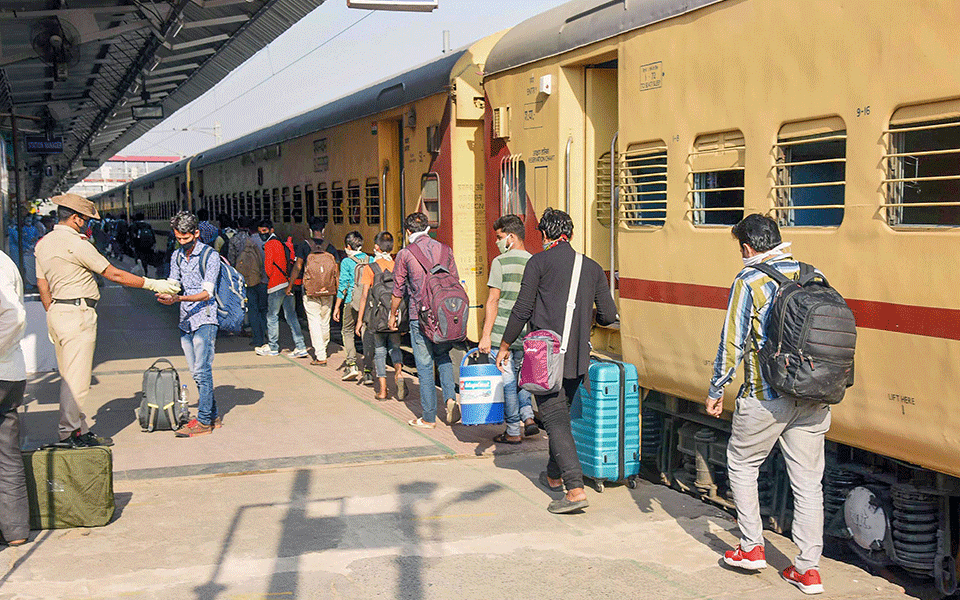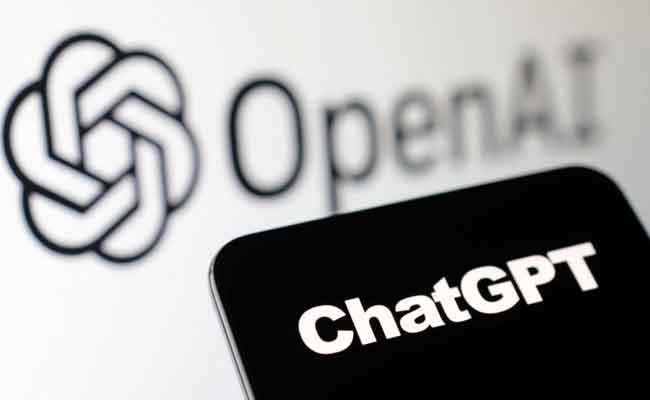New Delhi: A 34-year-old migrant worker died on board a Pune-Prayagraj Shramik Special train on Monday and his post-mortem has been conducted, officials said on Tuesday.
Akhilesh Kumar, who used to work at a hotel in Pune, was returning to his hometown in Gonda in Uttar Pradesh. He died during the journey and the body was taken off the train at Majhgawan in Madhya Pradesh's Satna district, the officials said.
The train reached the Majhgawan station just before 6:30 pm on Monday and left three hours later. Kumar had boarded the Uttar Pradesh-bound train with two friends, who were also working in Pune.
"The migrant worker died on the Pune-Prayagraj special train and his body was attended to in Madhya Pradesh. Post-mortem has been conducted," RPF DG Arun Kumar said.
He said there was no confirmation yet on whether the migrant had tested positive for coronavirus.
Efforts are on to find out his medical history in order to ascertain the cause of the death and the GRP has already informed the deceased's family about his demise.
The Indian Railways has operated 542 "Shramik Special" trains since May 1 and ferried home 6.48 lakh migrants stranded in various parts of the country amid the coronavirus-induced lockdown, officials said on Tuesday.
Of the 542 trains run so far, 448 have reached their destinations while 94 are in transit.
On Monday, a statement issued by the Union Ministry of Home Affairs (MHA) said the Indian Railways will now run 100 "Shramik Special" trains on a daily basis to facilitate a faster movement of workers.
Let the Truth be known. If you read VB and like VB, please be a VB Supporter and Help us deliver the Truth to one and all.
San Francisco (AP/PTI): OpenAI's latest update to its artificial intelligence model can mimic human cadences in its verbal responses and can even try to detect people's moods.
The effect conjures up images of the 2013 Spike Jonze move “Her,” where the (human) main character falls in love with an artificially intelligent operating system, leading to some complications.
While few will find the new model seductive, OpenAI says it does works faster than previous versions and can reason across text, audio and video in real time.
GPT-4o, short for “omni,” will power OpenAI's popular ChatGPT chatbot, and will be available to users, including those who use the free version, in the coming weeks, the company announced during a short live-streamed update. CEO Sam Altman, who was not one of the presenters at the event, simply posted the word “her” on the social media site X.
During a demonstration with Chief Technology Officer Mira Murati and other executives, the AI bot chatted in real time, adding emotion — specifically “more drama” — to its voice as requested. It also helped walk through the steps needed to solve a simple math equation without first spitting out the answer, and assisted with a more complex software coding problem on a computer screen.
It also took a stab at extrapolating a person's emotional state by looking at a selfie video of their face (deciding he was happy since he was smiling) and translated English and Italian to show how it could help people who speak different languages have a conversation.
Gartner analyst Chirag Dekate said the update, which lasted less than 30 minutes, gave the impression OpenAI is playing catch-up to larger rivals.
“Many of the demos and capabilities showcased by OpenAI seemed familiar because we had seen advanced versions of these demos showcased by Google in their Gemini 1.5 pro launch,” Dekate said. “While Open AI had a first-mover advantage last year with ChatGPT and GPT3, when compared to their peers, especially Google, we now are seeing capability gaps emerge.”
Google plans to hold its I/O developer conference on Tuesday and Wednesday, where it is expected to unveil updates to its own Gemini, its AI model.





